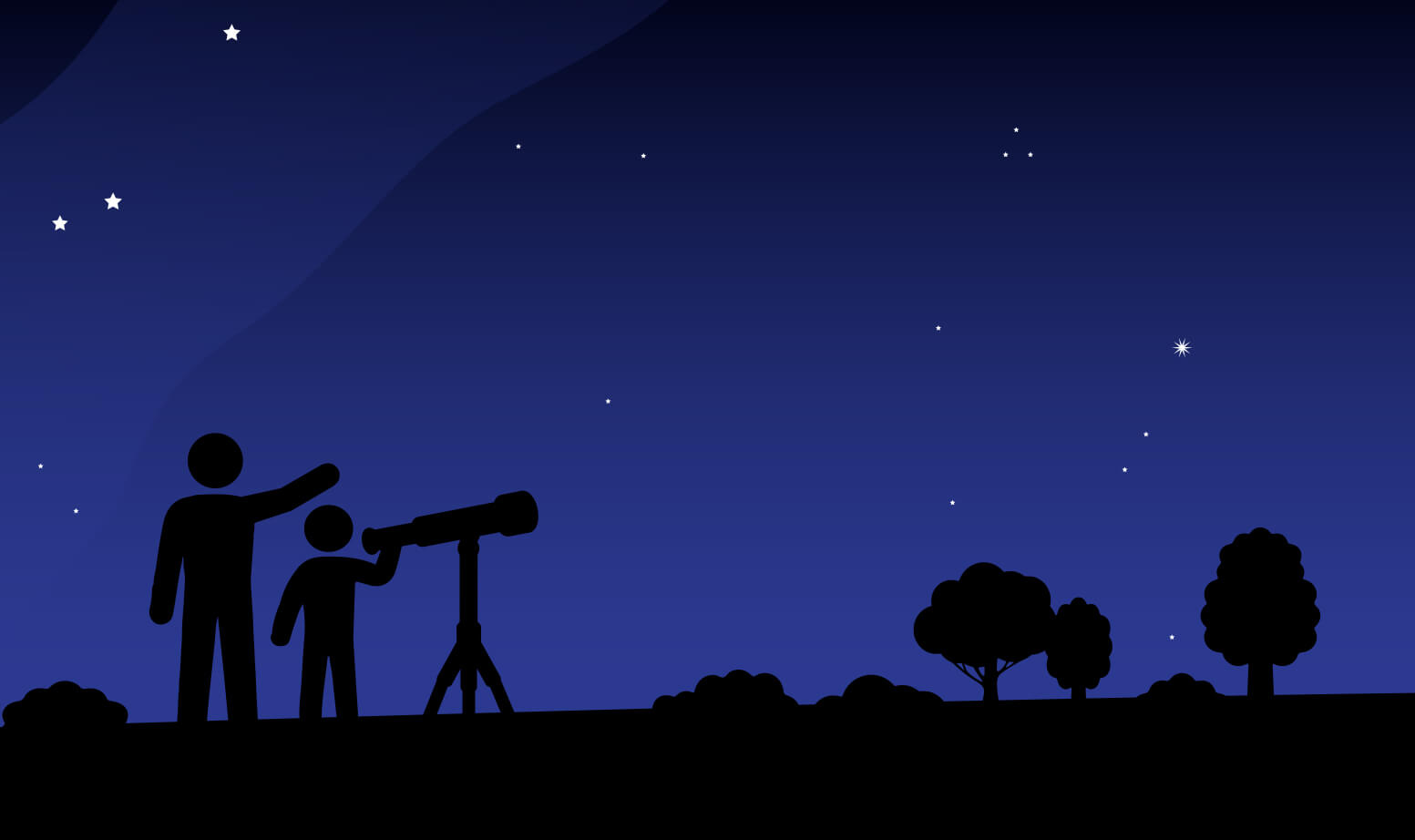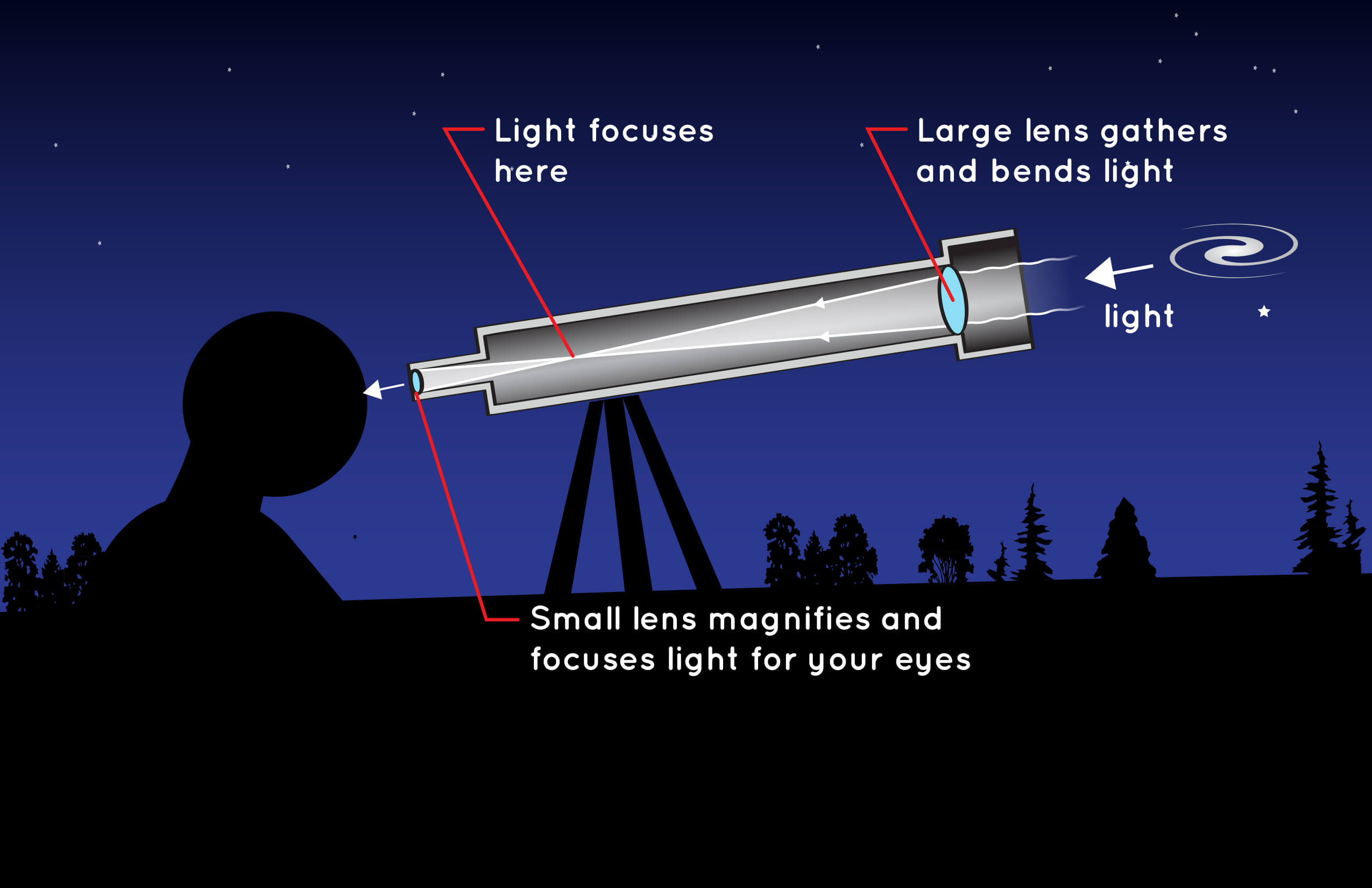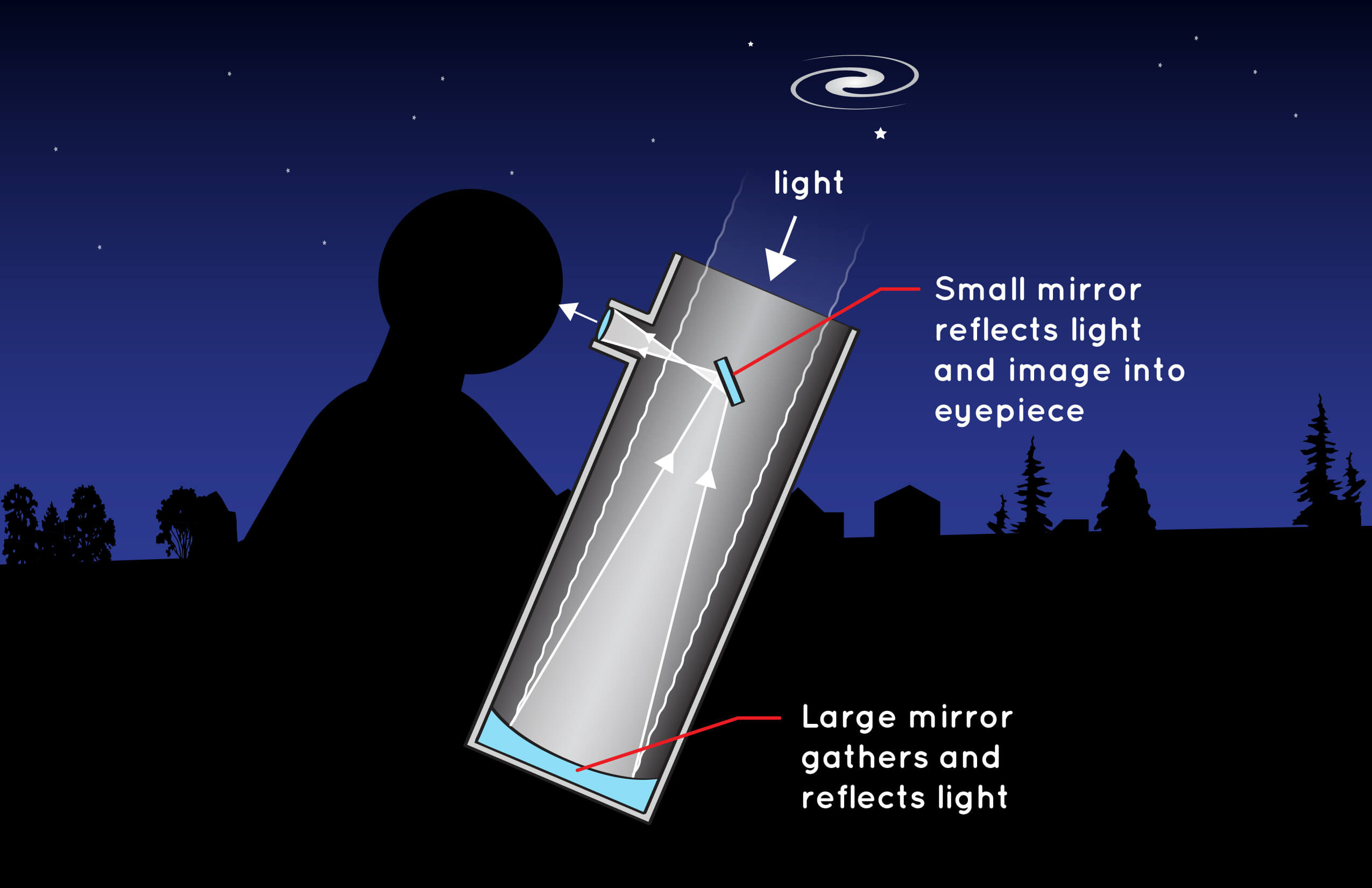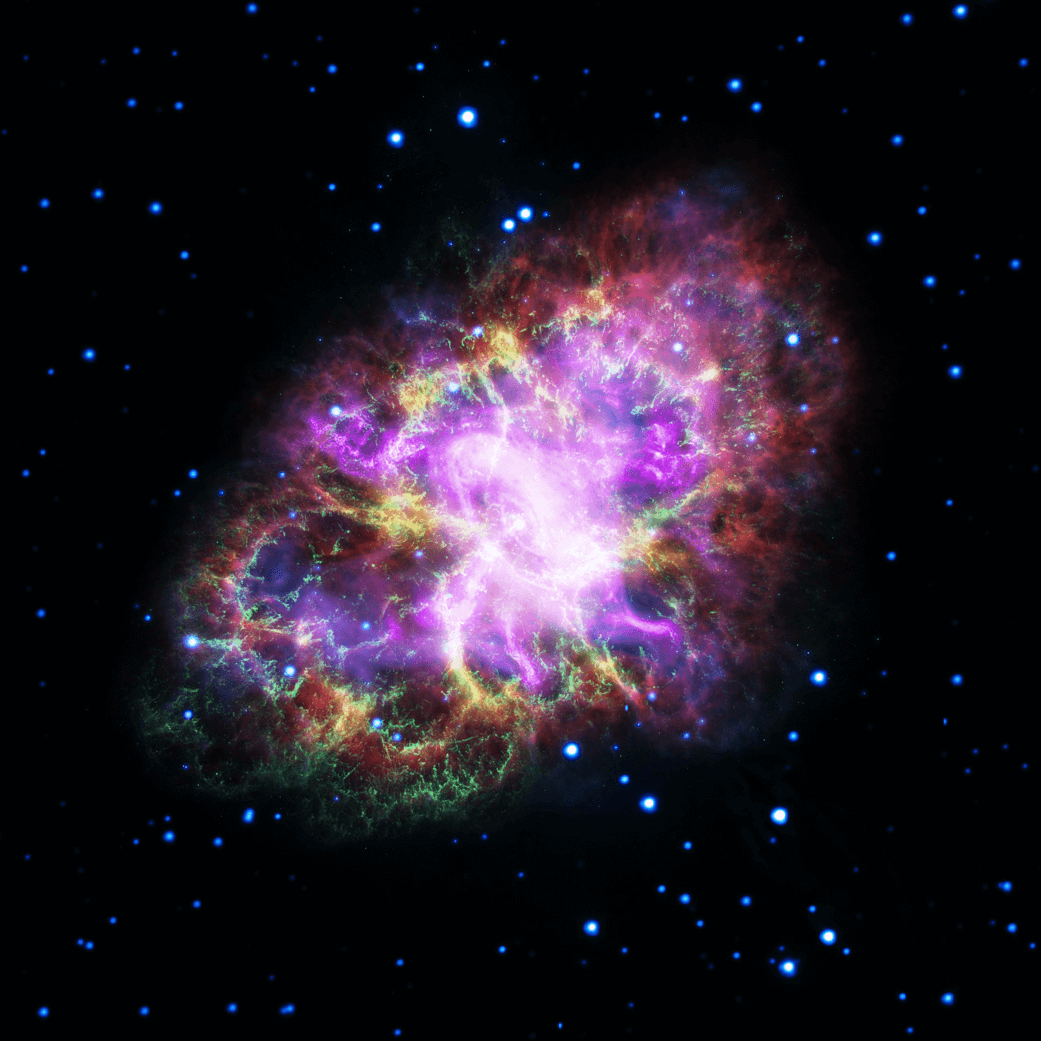
Credit: NASA/JPL-Caltech
A telescope is a tool that astronomers use to see faraway objects. Most telescopes, and all large telescopes, work by using curved mirrors to gather and focus light from the night sky.
The first telescopes focused light by using pieces of curved, clear glass, called lenses. So why do we use mirrors today? Because mirrors are lighter, and they are easier than lenses to make perfectly smooth.
The mirrors or lenses in a telescope are called the “optics.” Really powerful telescopes can see very dim things and things that are really far away. To do that, the optics—be they mirrors or lenses—have to be really big.
The bigger the mirrors or lenses, the more light the telescope can gather. Light is then concentrated by the shape of the optics. That light is what we see when we look into the telescope.
The optics of a telescope must be almost perfect. That means the mirrors and lenses have to be just the right shape to concentrate the light. They can’t have any spots, scratches or other flaws. If they do have such problems, the image gets warped or blurry and is difficult to see. It’s hard to make a perfect mirror, but it’s even harder to make a perfect lens.
Lenses
A telescope made with lenses is called a refracting telescope.
A lens, just like in eyeglasses, bends light passing through it. In eyeglasses, this makes things less blurry. In a telescope, it makes faraway things seem closer.

A simple refracting telescope uses lenses to make images bigger and more visible. Credit: NASA/JPL-Caltech
People with especially poor eyesight need thick lenses in their glasses. Big, thick lenses are more powerful. The same is true for telescopes. If you want to see far away, you need a big powerful lens. Unfortunately, a big lens is very heavy.
Heavy lenses are hard to make and difficult to hold in the right place. Also, as they get thicker the glass stops more of the light passing through them.
Because the light is passing through the lens, the surface of the lens has to be extremely smooth. Any flaws in the lens will change the image. It would be like looking through a dirty window.
Why Mirrors Work Better
A telescope that uses mirrors is called a reflecting telescope.
Unlike a lens, a mirror can be very thin. A bigger mirror does not also have to be thicker. Light is concentrated by bouncing off of the mirror. So the mirror just has to have the right curved shape.
It is much easier to make a large, near-perfect mirror than to make a large, near-perfect lens. Also, since mirrors are one-sided, they are easier than lenses to clean and polish.
But mirrors have their own problems. Have you ever looked into a spoon and noticed your reflection is upside down? The curved mirror in a telescope is like a spoon: It flips the image. Luckily, the solution is simple. We just use other mirrors to flip it back.

A simple reflecting telescope uses mirrors to help us see faraway objects. Credit: NASA/JPL-Caltech
The number-one benefit of using mirrors is that they’re not heavy. Since they are much lighter than lenses, mirrors are a lot easier to launch into space.
Space telescopes such as the Hubble Space Telescope and the Spitzer Space Telescope have allowed us to capture views of galaxies and nebulas far away from our own solar system. Set to launch in December 2021, the James Webb Space Telescope is the largest, most powerful space telescope ever built. It will allow scientists to look at what our universe was like about 200 million years after the Big Bang.

This image of the Crab Nebula was created with information from the Hubble Space Telescope, the Spitzer Space Telescope, the Chandra X-ray Observatory, European Space Agency's XMM-Newton and the Very Large Array. Credit: NASA, ESA, NRAO/AUI/NSF and G. Dubner (University of Buenos Aires)
Related Resources for Educators
Launchpad: Atmosphere and Optical Telescopes
Scope It Out! Game


